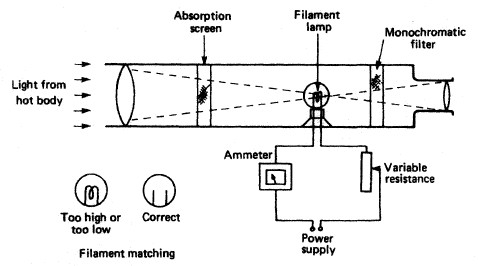
Thermometers, Thermocouple, Radiation pyrometer & Thermistor- Marine Temperature Measurement Instruments
Shipboard machinery must operate within certain desired parameters.
Instrumentation enables the parameters—pressure, temperature, and
so on—to be measured or displayed against a scale.Temperature measurement by instruments will give a value in degrees Celsius (°C). This scale of measurement is normally used for all readings
and temperature values required except when dealing with theoretical
calculations involving the gas laws, when absolute values are required


 Liquid in glass thermometer
Liquid in glass thermometer Bimetalic strip thermometer
Bimetalic strip thermometer Thermocouple
Thermocouple Optical pyrometer
Optical pyrometer